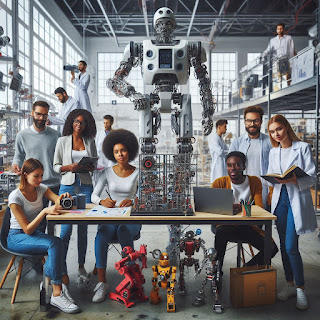Why Do Robots and Artificial Intelligence Systems Make Mistakes?
Robots and artificial intelligence systems can make mistakes for several reasons:
Programming Errors: Bugs or flaws in the code can lead to incorrect behavior or unintended actions by the robot.
Sensor Malfunction: Faulty or inaccurate sensors can provide incorrect data, leading to errors in decision-making or navigation.
Hardware Failures: Mechanical or electronic components may fail or degrade over time, causing the robot to malfunction.
Calibration Issues: Incorrectly calibrated sensors or actuators can result in errors in the robot's movements or measurements.
Ambiguous Instructions: If the robot receives unclear or incomplete instructions, it may not perform the desired task correctly.
Environmental Interference: Changes in the environment, such as unexpected obstacles or lighting conditions, can affect the robot’s performance.
Limited Learning Ability: Robots with limited machine learning capabilities might struggle with new or unexpected scenarios they weren’t trained on.
Communication Errors: Problems with data transmission between the robot and its control systems can result in errors or misinterpretations.
Complexity of Tasks: Performing complex or highly variable tasks can lead to mistakes if the robot’s algorithms aren’t sophisticated enough.
Human Error: Mistakes made by operators or programmers can lead to unintended robot behavior or system failures.
Understanding these factors helps in designing more reliable and robust robotic systems.













Comments
Post a Comment